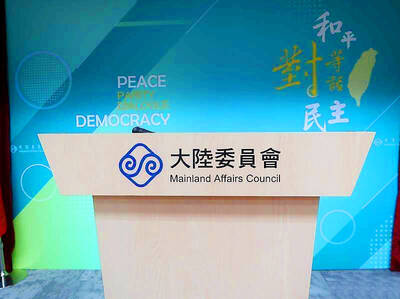In 2001, a fledgling Internet company named Google opened its first office outside the US in Japan, eager to tap a huge, tech-savvy market.
But after eight years, Japan is one of a few major countries Google has yet to conquer. The Web giant still trails far behind Yahoo Japan, the front-runner, operated by the Japanese telecommunications giant Softbank.
In a reversal of the rivalry in the US, Yahoo Japan dominates Japan’s Web search market with 56.5 percent of all queries, Internet research company GA-Pro said. Google, at 33.7 percent, is a distant second.
Unaccustomed to being second, Google is bending some of its most time-honored traditions in a renewed push into the Japanese market. Earlier this year, Google’s splash page for Japan abandoned the company’s classic spare design and added links to YouTube, Gmail and other services — an attempt to lure Japanese users who favor sites decorated with a cacophony of text and graphics.
And in a first for Google, based in Mountain View, California, it initiated branding ads for Japan and staged attention-grabbing publicity stunts, including one in which it invited passers-by to float into the air with the help of 2,500 balloons.
Google’s dogged interest in Japan has partly to do with sheer size. Japan is one of the world’s most wired countries, with more than 90 million regular Internet users — of which three-quarters use fast broadband connections and two-thirds also log in from cellphones.
And despite a sluggish economy, Japan’s ¥6.6 trillion (US$77 billion) ad market remains the world’s second-largest, one that an increasingly global advertising force like Google cannot afford to ignore.
“Japan is absolutely a key market for Google,” said Koichiro Tsujino, president of Google Japan.
Every day, for example, Japanese view 10 million clips on YouTube, Google’s video sharing site — and that is just from their cellphones, making them the world’s most avid adopters of video on-the-go.
“Japan leads the world in many ways,” he said.
That Japanese propensity to try new things is the other reason Google is intent on staying put in Japan. Over the years, Japan has become a testing lab for many of the Web giant’s cutting-edge new ideas, especially in mobile technology. Google’s Tokyo-based programmers, immersed in Japan’s mobile and Web culture, have become a valuable source of ideas for the entire company.
Markets outside the US account for half of Google’s revenue and the company is becoming more keenly aware of the need to tailor its services to local markets, as well as the advantages of absorbing ideas from outside the US, company executives say.
“Japan made us realize that non-US ideas can go global,” David Eun, a vice president for Google, said on a recent trip to Japan, where he closed deals with two Japanese broadcasters to allow YouTube to run some of their content.
Google Japan’s offices occupy several floors in a skyscraper in Shibuya, a Tokyo neighborhood popular with start-ups that is also a hangout for the city’s hippest teenagers. Minutes away from where Google developers work, young Japanese perch on sidewalks, playing with their Web-enabled cellphones, thumbs flying and eyes glued to the tiny screens.
But most of those trendsetters do not regard Google as being very Japanese — a big headache for the company. Google has never been able to overcome Yahoo’s advantage as the first Web-based search engine. And although 35 percent of Yahoo Japan is owned by Yahoo in Sunnyvale, California, it is viewed as a local company.
“Yahoo Japan is a Japanese company, and most of their employees are Japanese people who fluently understand how the Japanese mind-set and business work,” said Nobuyuki Hayashi, a technology analyst. “But Google’s still a foreigner who’s learned how to speak some Japanese.”
Popularizing Google in Japan has been fraught with 21st-century versions of the cultural mishaps that have long plagued US companies in Japan. In May, Google was forced to reshoot its entire “Street View” image stock in Japan — with a camera positioned to capture views 38cm lower — after intense criticism that the service peeked over fences and into people’s homes, invading privacy. The narrower width of Japan’s roads made the service especially intrusive, bloggers fumed.
Google Earth also came under fire after posting historical maps that detailed locations of former communities of an “untouchable” caste, still a sensitive topic in Japan. Human rights advocates were furious that the maps could be used to identify families that had lived in the low-caste neighborhoods.
But Google keeps trying. After studying feedback from Japanese users, developers designed Google’s maps service in Japan so that a query led users to the town’s train station or bus terminal, not the center of town as it would in the US, reflecting the way the Japanese, heavily reliant on public transportation, think of their personal geography.
Programmers based in Tokyo have proposed and developed a line of services and functions, including “emoticons” for Gmail — a particular Japanese obsession — and a function allowing users to add photos to Google Maps. It created “Spellmeleon,” to correct misspelled queries. It took developers based in Tokyo to realize that non-native English speakers, who might not be very good spellers of English words, could use a little help with queries.
“Part of our job is to think specifically about the Japanese market,” said Kentaro Tokusei, group product manager at Google Japan. “We find whatever we build works globally, too.”
Some services in Japan offer a glimpse into the future. The Japanese version of Google’s photo-sharing service, Picasa, offers quick response (OR) bar codes that contain Web address information. Scanning a QR bar code with a Japanese cellphone takes the user to a Web site to view an online photo album.
Japan has been an especially important market for YouTube, with viewers here making up the site’s biggest audience outside the US. The site’s big presence in Japan has put developers at the forefront of crucial projects — for example, a feature that will bring text captions to many videos on the site, linked with automatic translation into 51 languages.
The captions will go a long way toward helping videos go viral across language divides, said Hiroto Tokusei, YouTube product manager in Japan and Kentaro Tokusei’s younger brother. (The Tokusei brothers, both Stanford graduates with experience in Silicon Valley, were brought to Google Japan with an eye to localizing Google’s products while keeping Google at the cutting edge of innovation.)
Next month YouTube will also start a mobile version of its “Click-to-Buy” feature, which identifies songs used in video clips, then lets users download them to their cell phones for use as ring tones.
“To have an audience so obsessed with video and TV, and with access to broadband, means Japan is the perfect place to experiment,” Hiroto Tokusei said.

MORE VISITORS: The Tourism Administration said that it is seeing positive prospects in its efforts to expand the tourism market in North America and Europe Taiwan has been ranked as the cheapest place in the world to travel to this year, based on a list recommended by NerdWallet. The San Francisco-based personal finance company said that Taiwan topped the list of 16 nations it chose for budget travelers because US tourists do not need visas and travelers can easily have a good meal for less than US$10. A bus ride in Taipei costs just under US$0.50, while subway rides start at US$0.60, the firm said, adding that public transportation in Taiwan is easy to navigate. The firm also called Taiwan a “food lover’s paradise,” citing inexpensive breakfast stalls

TRADE: A mandatory declaration of origin for manufactured goods bound for the US is to take effect on May 7 to block China from exploiting Taiwan’s trade channels All products manufactured in Taiwan and exported to the US must include a signed declaration of origin starting on May 7, the Bureau of Foreign Trade announced yesterday. US President Donald Trump on April 2 imposed a 32 percent tariff on imports from Taiwan, but one week later announced a 90-day pause on its implementation. However, a universal 10 percent tariff was immediately applied to most imports from around the world. On April 12, the Trump administration further exempted computers, smartphones and semiconductors from the new tariffs. In response, President William Lai’s (賴清德) administration has introduced a series of countermeasures to support affected

CROSS-STRAIT: The vast majority of Taiwanese support maintaining the ‘status quo,’ while concern is rising about Beijing’s influence operations More than eight out of 10 Taiwanese reject Beijing’s “one country, two systems” framework for cross-strait relations, according to a survey released by the Mainland Affairs Council (MAC) on Thursday. The MAC’s latest quarterly survey found that 84.4 percent of respondents opposed Beijing’s “one country, two systems” formula for handling cross-strait relations — a figure consistent with past polling. Over the past three years, opposition to the framework has remained high, ranging from a low of 83.6 percent in April 2023 to a peak of 89.6 percent in April last year. In the most recent poll, 82.5 percent also rejected China’s

PLUGGING HOLES: The amendments would bring the legislation in line with systems found in other countries such as Japan and the US, Legislator Chen Kuan-ting said Democratic Progressive Party (DPP) Legislator Chen Kuan-ting (陳冠廷) has proposed amending national security legislation amid a spate of espionage cases. Potential gaps in security vetting procedures for personnel with access to sensitive information prompted him to propose the amendments, which would introduce changes to Article 14 of the Classified National Security Information Protection Act (國家機密保護法), Chen said yesterday. The proposal, which aims to enhance interagency vetting procedures and reduce the risk of classified information leaks, would establish a comprehensive security clearance system in Taiwan, he said. The amendment would require character and loyalty checks for civil servants and intelligence personnel prior to